November 2024
Cities/Pondering
After returning to Pokhara, Tula and I parted ways. I spent two days exploring the city (including a paragliding tour!) before making my way north of town for a four-day yoga and meditation retreat, one of the anchor activities I mentioned in an earlier post. I went with Sadhana Yoga Center and enjoyed the simple, slow-paced experience. Each day began at 6am and included four sessions of Hatha yoga mixed with breath work and steam baths. All the food was homemade, vegan, and delicious.
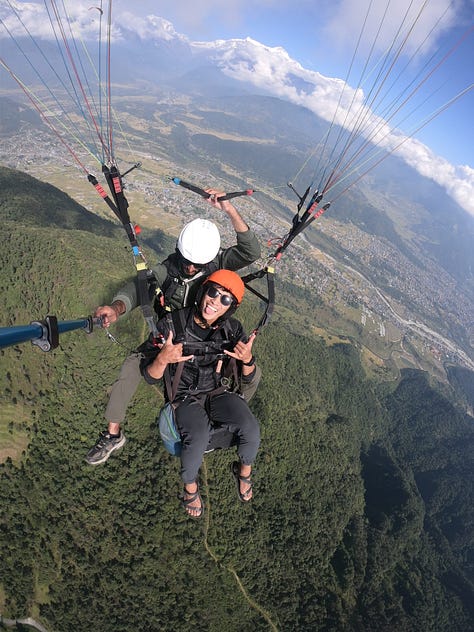
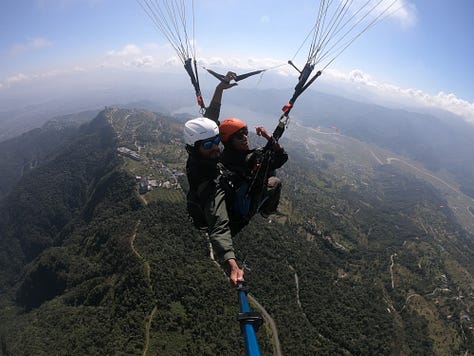

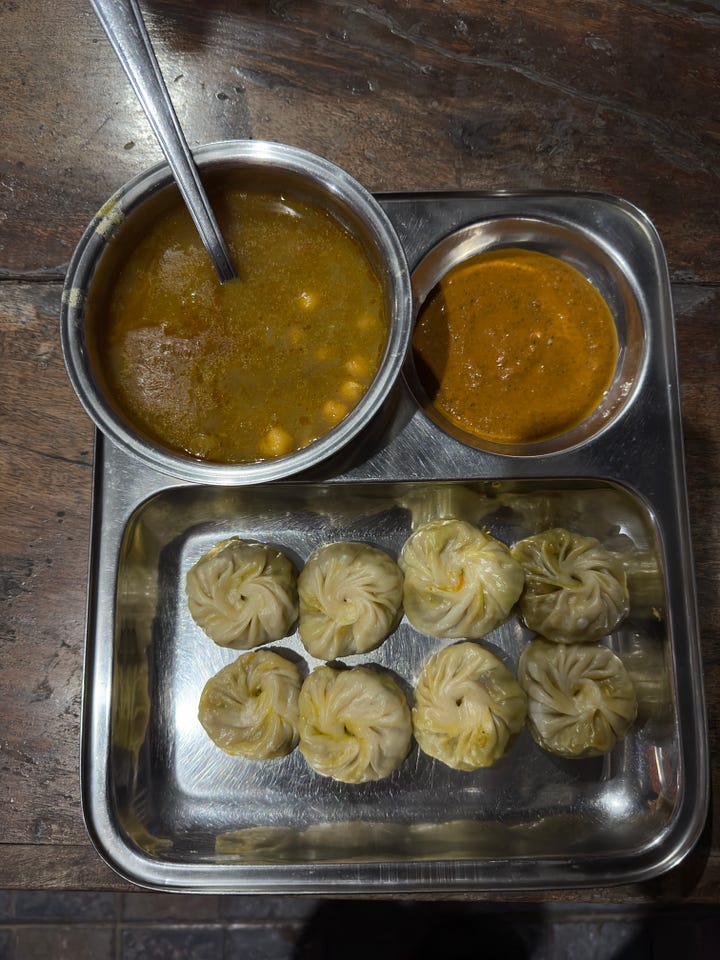
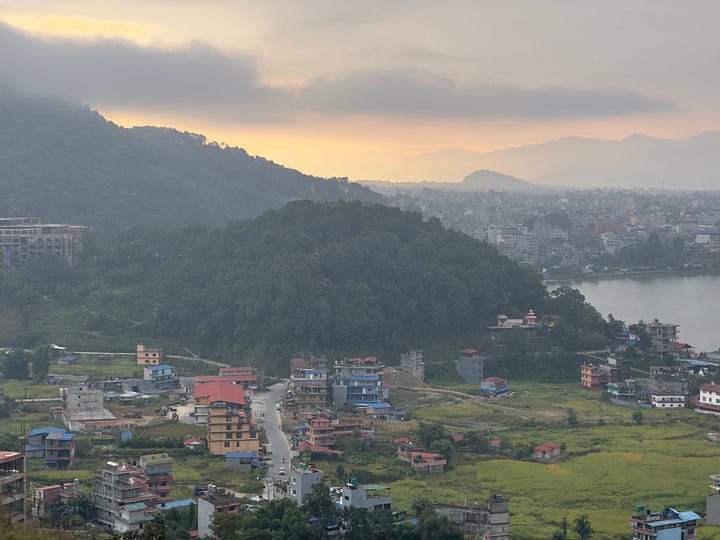
The rest of my time felt like an introductory course to Nepalese culture. First, I flew back to Kathmandu to explore for the next five days. The capital is somehow both chaotic and peaceful. I rode around on the back of scooter taxis, weaving through traffic to visit famous stupas (Buddhist temples) and Durbars (royal palaces). At sunrise, I’d walk to the Buddha Stupa near my hotel, where monks, vendors, and locals slowly trickled in. By late morning, the area was bustling, with hundreds of Nepalese and foreigners circling the sacred site

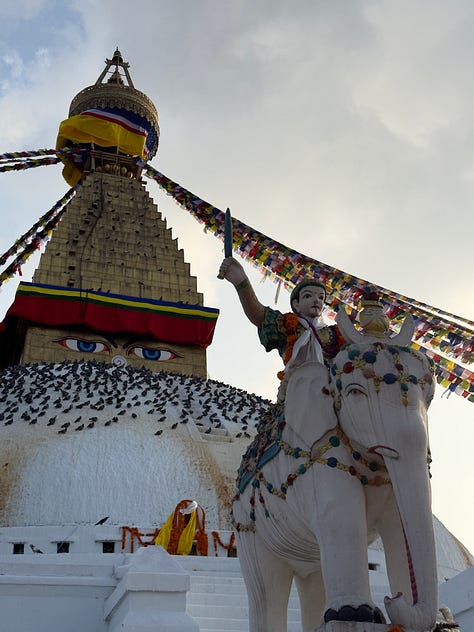

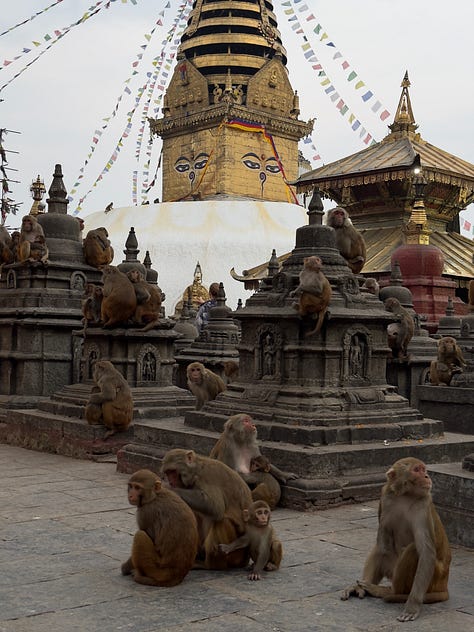

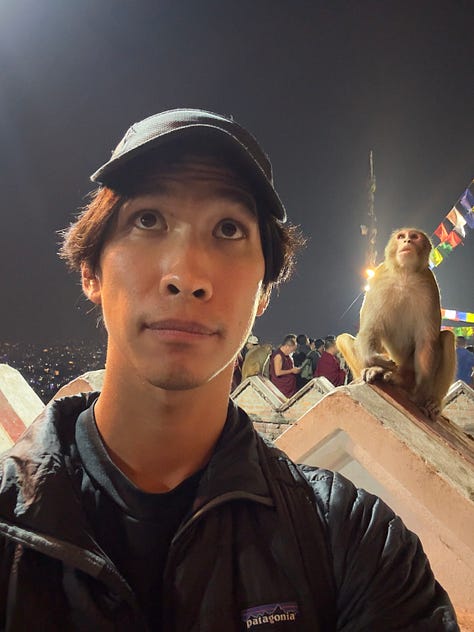
The Durbar Squares were stunning. You could feel and see the history in the temples, some of which had survived the massive 2015 earthquake. I learned about the Kumari, a young girl who is selected through an elaborate process to serve as a living goddess. Photos weren’t allowed, but I caught a glimpse of her at the Kumari Ghar, her official residence.
The whole idea of this living goddess perplexed me. At the same time, it made me realize just how little I know about so many cultures and how much I appreciate the opportunity to learn. Even when I don’t share the same beliefs, witnessing sincere faith and devotion leaves an impression.
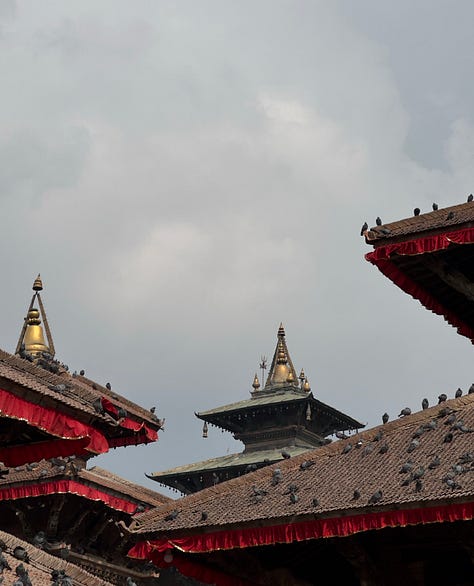
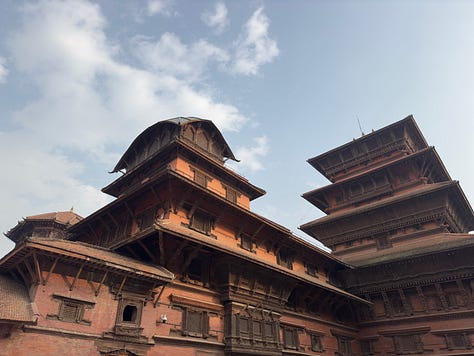
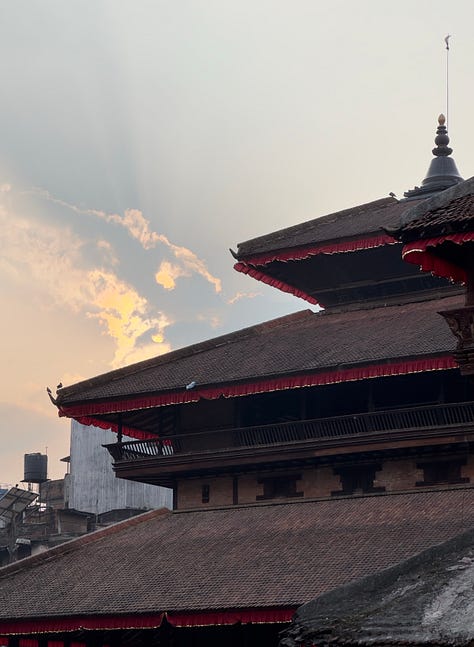
My visit to Nepal happened to coincide with the Hindu Tihar festival, known as Diwali in India. This spiritual and cultural occasion takes place over five days. The first four are dedicated to animals important to the religion and society (crow, dog, cow, and ox), and the fifth to the bond between brothers and sisters. My favorite was day two, or Kukur Tihar, where all dogs, both strays and pets, are honored with food, red tika markings, and marigold garlands.


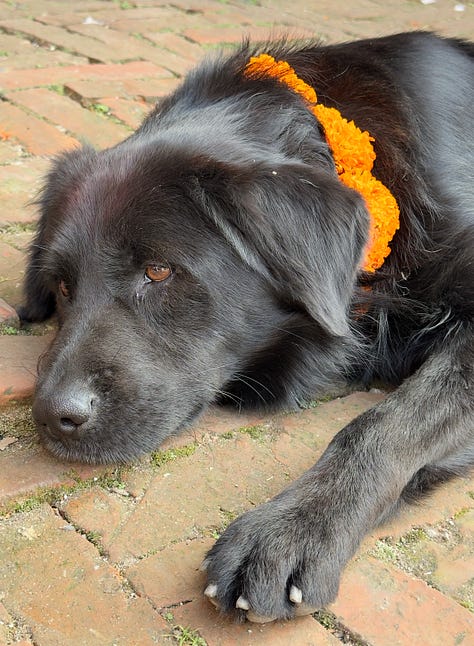
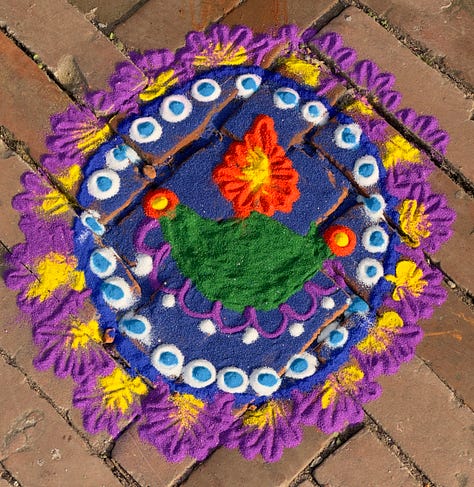

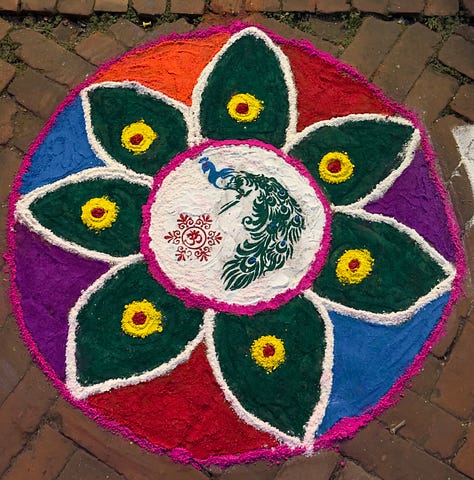
On one of my afternoons, I visited Pashupatinath Temple, one of the most sacred Hindu sites that is also well known for its open-air cremations. I watched from across the river bank. As the sun set, the family of the deceased carried the wrapped body down the stone steps to the Bagmati River, drew water and bathed the body, then cremated him/her on a funeral pyre.
It felt bizarre to witness something so intimate in the company of so many strangers—there were hundreds of onlookers—but also oddly peaceful and serene. I’ve read that cremation ensures reincarnation in Hinduism, and I was moved by the immense respect, love, and care shown to the departed.



From Kathmandu, I headed to Bhaktapur, a UNESCO World Heritage Site famous for its temples. I also took a day to head up the mountains to the nearby Nagarkot, a small village known for its sunrise views of Everest. Both areas had far fewer tourists than Kathmandu, which made for a refreshing change of pace.
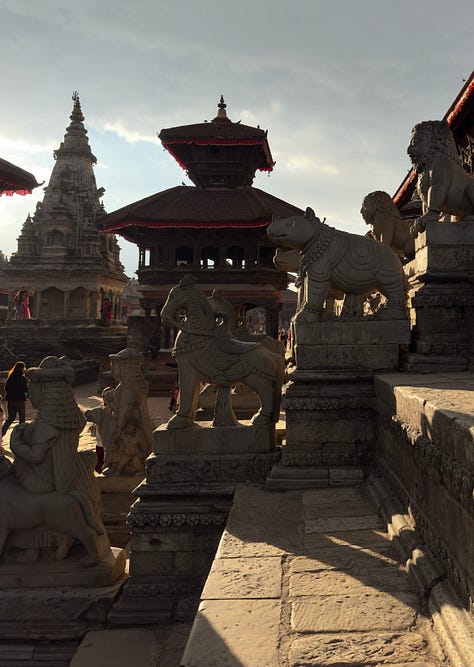
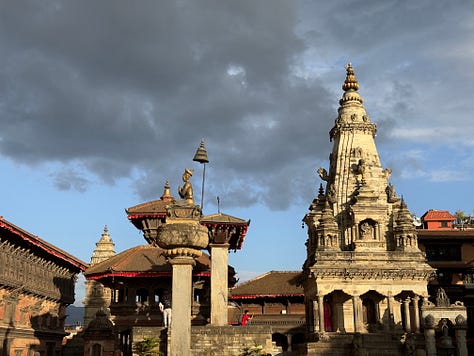

The morning I left for Bhaktapur happened to be the day I got that surprising update about J (you can catch up on that here). That took me for a spin for a while, but looking back, I’m grateful I was in Nepal when I got the news. I couldn’t have been in a better mental and emotional state to process the shocker after having had such beautiful, refreshing, and perspective-setting experiences.

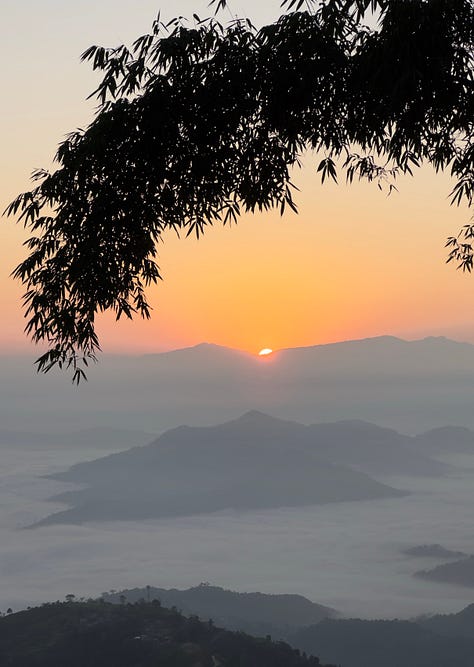
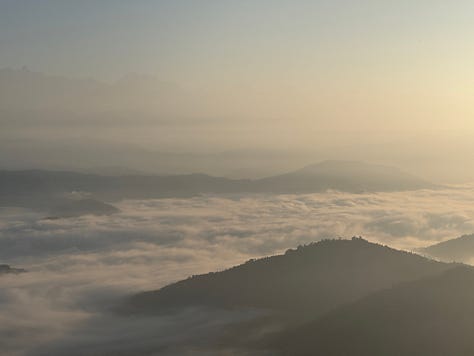
I then took a bus back to Kathmandu and boarded a flight to my last stop in Nepal: Chitwan National Park. This region is famous for jungle safaris and is one of the few places you might spot a Bengal tiger in the wild. I booked a river and walking safari where I saw rhinos, gharials, and various birds. I was hoping to find a tiger or the elusive sloth bear, but luck wasn’t on my side (or maybe it was? Park rangers recently had to capture a tiger that had killed a few locals).

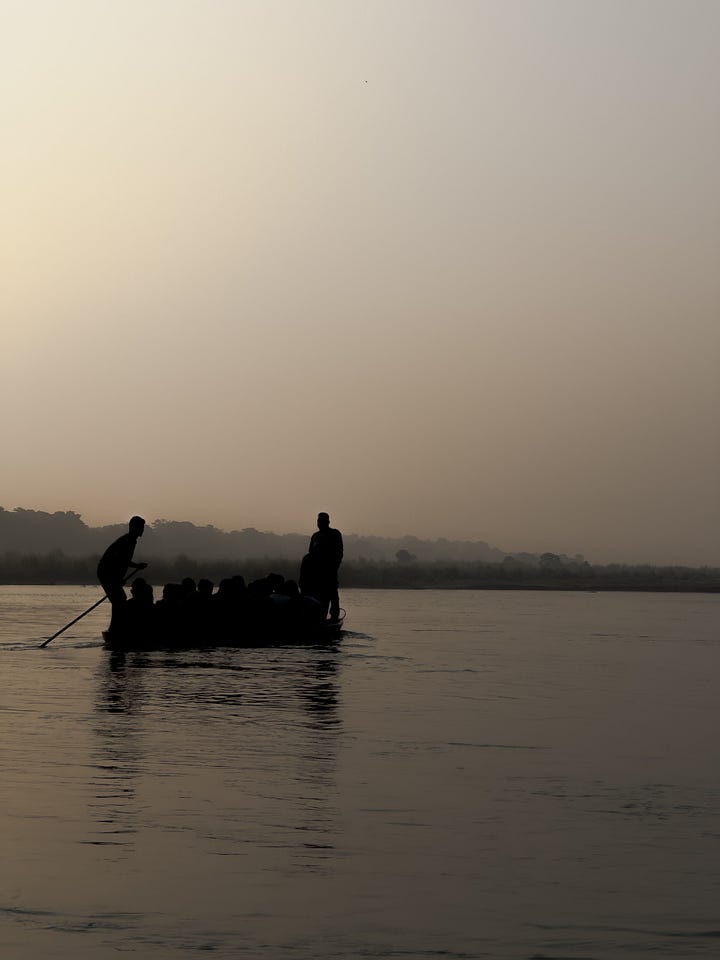


It was a fun couple days seeing a completely different part of the country. Chitwan sits at a much lower elevation than other parts of Nepal and has a subtropical climate, so it was warm and humid. On two separate nights, a wild rhino strolled past my hotel on its way to a farmer’s field for a midnight snack. Surreal moment.
Eventually, my time in Nepal came to a end. I caught one final bus back to Kathmandu, did some laundry, and shared a final beer and farewell with Tula.
Of all the countries I’d visited so far, possibly with the exception of walking the Camino de Santiago in Portugal and Spain, Nepal felt the most transformative. I don’t quite know how to describe the feeling, but nearly every area I visited felt infused with an ancient energy and spirit. I took with me more than I arrived with, including:
the insights I shared in the Himalayas post
a sense of awe of how beautiful nature is
a deep appreciation for an entirely different culture
and after the unexpected update about J, a quiet sense of pride and wonder at how much I’ve healed. The kind of healing my past self couldn’t have imagined now feels like something I’ve truly lived.
A 30 second visual recap:
And now, I head back to southeast Asia for a much-anticipated month of scuba diving in Indonesia!




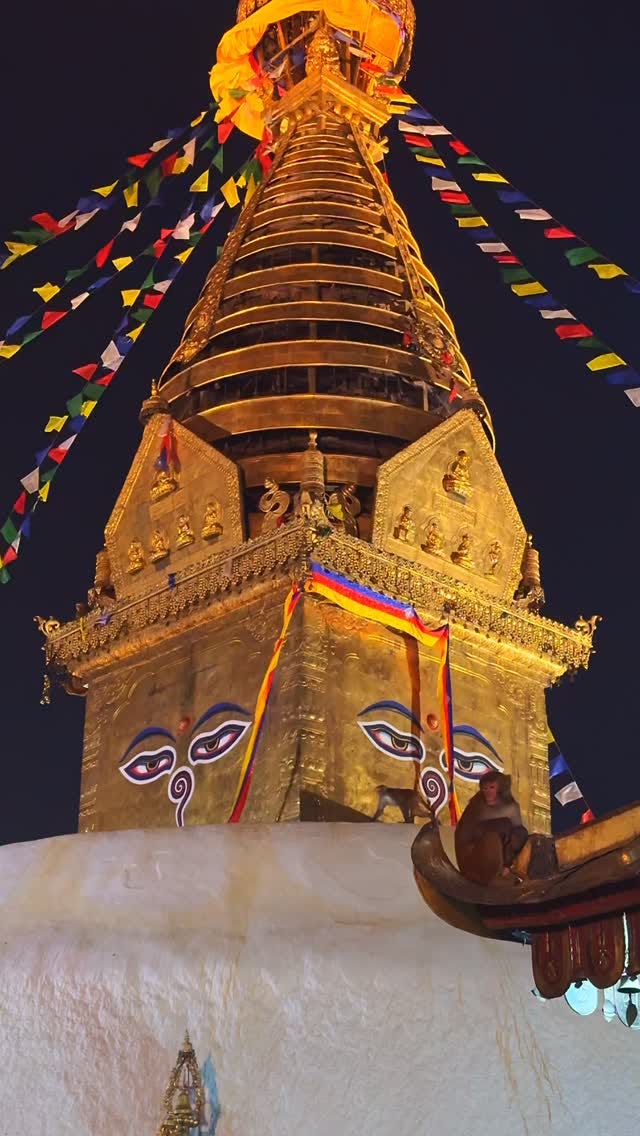
Great post!!!